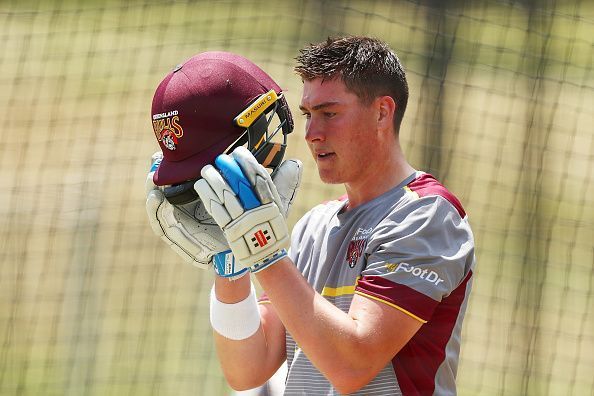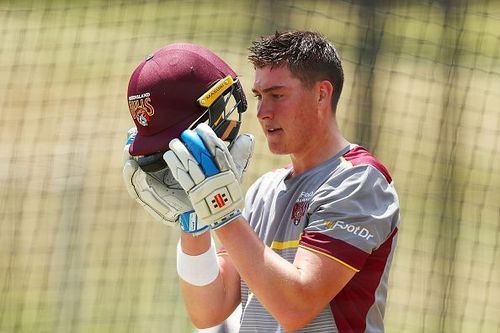
Of Matt Renshaw and Australia's Selection Shenanigans

The mood around Australian cricket was anything but bullish going into the 2013-14 Ashes. Back to back series losses in India and England had put huge question marks on the pedigree of the upcoming talent. There were serious concerns on fitness of the fast bowlers, form of the top order, and Michael Clarke’s popular acceptance as leader of the pack both among his colleagues as well as the Australian public and media.
But two days into the Brisbane test, Mitchell Johnson took it upon himself and what followed for nearly a month and a half after that, the English are still recovering from. They were left wounded, scarred, and the humiliation triggered an overhaul in personnel with immediate effect. The dressing room broke apart and the secrets hitherto best kept, found their way into the public domain rather easily. The Australians were loving it. Every bit of it. They were kept bereft of Ashes success for eight years but Johnson had ensured it was worth the wait.
However, as much as this taste of rare dominance was rejoiced, it was more than apparent that this unit was overwhelmingly on the wrong side of 30’s and won’t stick around for long. And those fears were anything but unfounded as heads started rolling almost immediately. Succumbing one after another to form, fitness, or fragility, the only survivors from that all conquering squad are the current skipper Steven Smith, his deputy David Warner, and the team’s lead spinner Nathan Lyon.
But Australian cricket had been here before. The 2006-07 Ashes winning side, which demonstrated identical dominance, disintegrated even before getting rid of the success party hangover and the transition was anything but smooth. With the knowledge, wisdom, and experience of handling that arid phase, the transition could have been handled much more efficiently this time but that was not to be.
For too long, Australia kept picking players well past the ideal age to offer the team any long-term stability. The merit of these selections was cited in the heaps of runs scored by these players in Shield cricket. And while that made a compelling argument, it was always a matter of time before the flaws in this model were exposed. It took two successive home defeats at the hands of a South Africa side without its two best players for Australia to revisit their strategy and finally to invest in players who’d offer the team a sustainable balance.
In come Peter Handscomb and Matthew Renshaw. Apart from the instant impact the two had on Australia’s changing fortunes, it also mattered that neither represented New South Wales at the state level. The selections therefore were entirely merit oriented and with a vision to create a core group of successors to the incumbent Smith and Warner. Finally, one felt Australia had moved away from the convenient route of quick fixes. No more of the George Baileys, the Adam Voges’, and the Callum Fergusons.
Both made steady progress through the four Tests they got to play of the summer and it showed in results as Australia won each of those. The challenge that would be a key determinant of their pedigree at this level though, was right up next as two difficult away tours to India and Bangladesh were lined up. The setting was all too familiar. Both Joe Burns and Usman Khawaja – stellar finds of the summer before – were found completely out of their depth on that forgettable tour to Sri Lanka in 2016 and you couldn’t have been blamed for being similarly cynical about Renshaw and Handscomb.
Instead, the two instantly rose to the occasion and performed exceeding all expectations. Renshaw in particular, was sublime on the rank turners in Pune and Bangalore. His craftsmanship of playing spin impressed one and all. He was decisive with his footwork, alert at picking the length early, and made great use of his tall frame by using the depth of the crease to his advantage. Over the course of the series, he comfortably outplayed Warner – his senior, seasoned opening partner. His first innings knock in Pune was arguably of greater importance than the masterfully crafted hundred by his captain in the second innings of the Test.
Handscomb started slow but never looked out of place. After a few impressive but brief starts, he rose to prominence when he dropped the anchor on the final day in Ranchi, which allowed Australia to salvage a draw and go to Dharamsala with the series hanging in parity. The two again combined for a crucial partnership at Mirpur in the first Test against Bangladesh after the team was four down for very little with both Smith and Warner accounted for. The partnership helped steady the ship and allowed Australia to nearly match the hosts’ first innings score. Handscomb would go on to make another big score in the second and final Test of the series helping his team to a comfortable win.
The away cycle was finally over and it was evident that the new investments had yielded results – perhaps not the most quantifiable ones but given Australia’s recent performances in those conditions, these returns were more than solid without being spectacular. And now that the attention was turned to the home summer, it was certain Australia had found two more than able deputies to the two senior statesmen in the side and add Usman Khawaja to the mix, it would make a formidable five making life difficult for Joe Root’s touring party.
Instead, this script had another twist. Towards the final leg of the away cycle, Renshaw’s runs had started to dry up somewhat. It didn’t seem to be a major concern until the trend of low scores continued in the first couple of shield games he played for his home side Queensland. Going into the second game, the talks had begun casting doubts over Renshaw’s readiness for a series this big.
Western Australia coach Justin Langer didn’t shy away from making a statement or two in the media and suddenly, Renshaw was now playing for a spot in Australia’s XI. Langer’s conflict of interest was clear as day since two WA players – Cameron Bancroft and Shaun Marsh – were vying for the one vacant spot in the batting order. Now with Renshaw’s dip in form, there were suddenly two openings.
Australia and New South Wales captain Steven Smith was suddenly seen fielding in the first slip – a position he’s repeatedly avoided and which last belonged to Renshaw – and the signs were there for all to see. Renshaw had to audition all over again; against the team led by his national captain no less. Renshaw failed. Twice.
Bancroft meanwhile raked up runs just about at the right time and the deal was sealed. The narrative had defeated Renshaw and his low scores meant the selectors didn’t have to offer much justification of his omission either. And it meant, for a fourth summer straight, David Warner would have a new opening partner – never more unnecessarily so.
It will be disingenuous to suggest Renshaw has set the world alight since his debut late last year. An average of 36.6 after 10 Tests is modest at best but not too long ago it was touching 45. But more importantly, it’s the quality and relevance of the runs that merit one’s respect. In playing attritional cricket in the conditions Australia have been the most vulnerable in, Renshaw has defied his age and done enough to not having to audition all over again through shield games in order to be picked. He had more than made his case to be the natural partner to Warner at the start of the summer.
If Bancroft had made such a compelling case to the selectors, he could have been picked for the one spot, which is now reserved for Shaun Marsh who is making his seventh comeback at the age of 35. And it won’t take great foresight to know he won’t hang around for long this time either.
Playing pace has never been Marsh’s strength. He was picked for the tour of India as a specialist of Asian conditions and after poor returns, failed to find himself a berth on the flight to Bangladesh. Now with a few just about decent scores in shield games, he makes his way back at the expense of Glenn Maxwell and Hilton Cartwright – two players who haven’t done anything particularly wrong in the opportunities they were presented.
Ironically, but for some extraordinary upset, Australia should comfortably regain the Ashes, probably with a Test to spare. But that will be despite the selections made here, and not because of it. Bancroft is a capable player and won’t do much wrong in a home season he’ll get to play from the start of.
Fortunately for him, Australia’s next assignment is in South Africa – a place where they have always done exceedingly well in conditions not so unfamiliar. And hence, it’ll be an easier challenge for him to cement his place than it was for Renshaw.
Should Australia win both the series, few people will care to look back and question these decisions but the 21-year-old Matt Renshaw after scoring hard runs in adverse conditions certainly has reasons to feel shortchanged. Renshaw has so far excelled each time the conditions were tough for batting but is yet to learn cashing in on favourable, conducive pitches. The latter is always easier to correct than the former. But maybe Darren Lehmann and Steven Smith think otherwise.